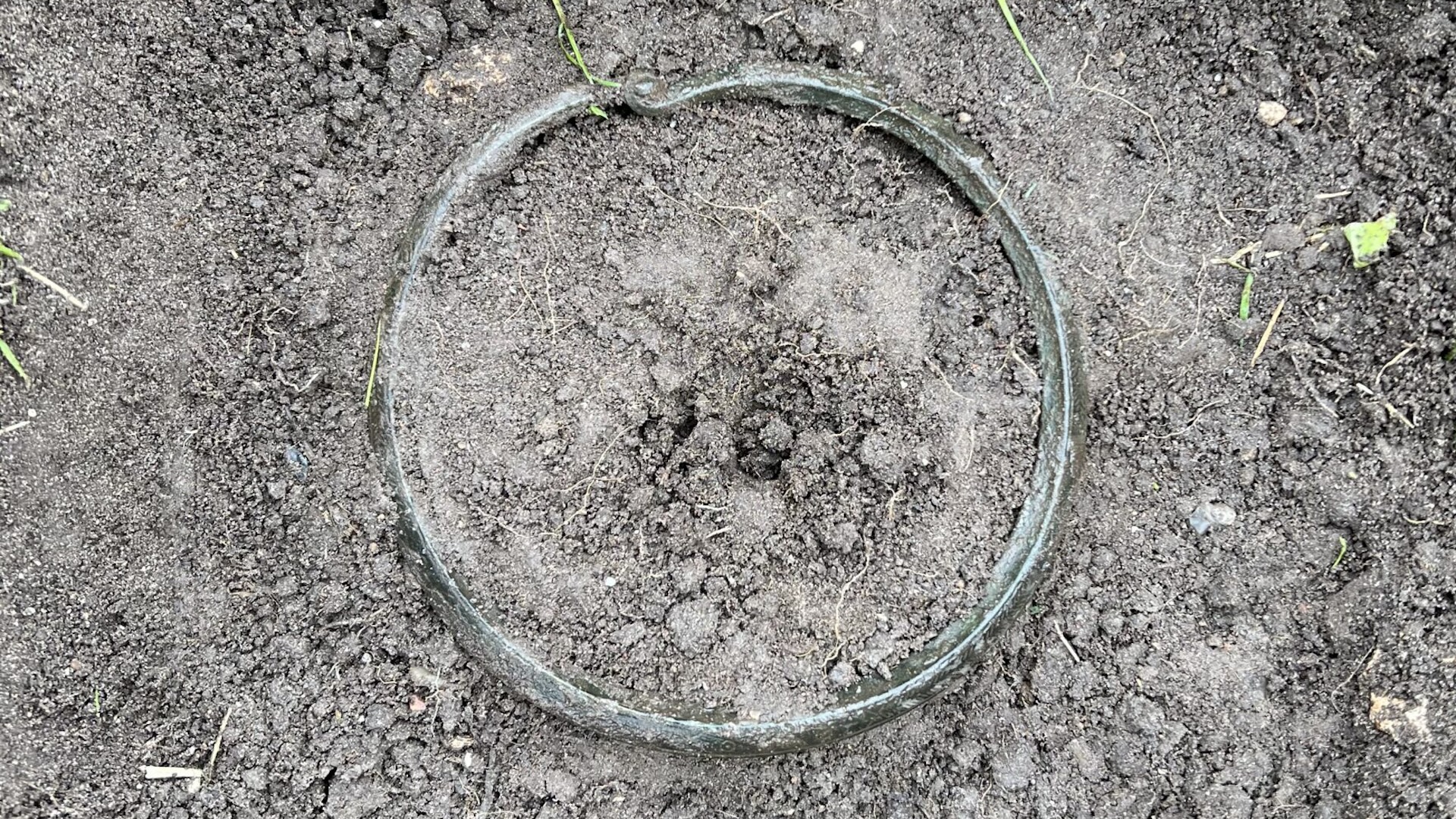Ritually bent Bronze Age sword unearthed in Danish bog is 'very rare find'
The sword, which has iron rivets in its handle, may be one of the earliest iron artifacts found in Denmark.

A metal detectorist has unearthed a long, bronze sword that was bent into an S shape during an ancient ritual in what is now Denmark.
The sword and other artifacts — which were found in a bog near Veksø, northwest of Copenhagen — date to about 2,500 years ago, during the late Bronze Age. They are thought to have been part of a ritual sacrifice, although this practice was no longer common at that time. Upon discovering the artifacts, the metal detectorist notified the Danish museum group ROMU.
"It's what I would describe as a very rare find," excavation leader Emil Winther Struve, an archaeologist and curator with ROMU, said in a translated statement.
Although such items were often deposited in bogs as sacrifices during the early and middle Bronze Age in northern Europe, "We don't know that many from the latter part of the Bronze Age," he said. However, the practice of sacrificing or killing people in bogs — leaving behind remains known as "bog bodies" — spans a longer period, from the Stone Age to the 19th century.
Related: Broken pieces of rare Viking sword reunited after 1,200 years apart

Ritual sacrifice
In addition to the bent sword, archaeologists found other Bronze Age artifacts, including two small, bronze axes; several large, bronze "ankle rings"; and what may be a fragment of a needle, according to the statement.
A few days later, the archaeologists also discovered a large, bronze "neck ring" just 230 feet (70 meters) away. The neck ring is only the second of its kind found in Denmark, and the archaeologists think from its style that it was imported from what's now the Baltic coast of Poland.
Sign up for the Live Science daily newsletter now
Get the world’s most fascinating discoveries delivered straight to your inbox.
The bronze sword's handle contains two iron rivets that may be the earliest iron ever found in Denmark. The ROMU statement described the sword as "almost a physical manifestation of the transition from the Bronze Age to the Iron Age."
The sword's design suggests it was not made in Denmark but rather in more southern parts of Europe that were dominated by the Hallstatt culture during the Bronze Age, the statement said. The Hallstatt culture thrived from about the eighth to the sixth centuries B.C. and was influenced by Europe's early Celtic culture.
The ritually bent sword was a genuine weapon and indicated a transition from more lightweight swords used mainly for stabbing, Struve said, "but now they are becoming tougher, more solid and have a different weight, so you can use them more violently and for chopping."
The Hallstatt culture had a warrior ideal that demanded conquest, war and conflict. "The sword is perhaps an image of that," Struve said.
Tom Metcalfe is a freelance journalist and regular Live Science contributor who is based in London in the United Kingdom. Tom writes mainly about science, space, archaeology, the Earth and the oceans. He has also written for the BBC, NBC News, National Geographic, Scientific American, Air & Space, and many others.









